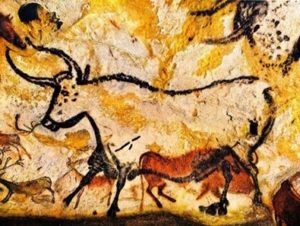Lascaux Cave Paintings
Lascaux cave paintings are a stunning collection of prehistoric rock art located in the Dordogne region of southwestern France. They are considered one of the most significant examples of Palaeolithic art and provide valuable insights into the lives and artistic expressions of our ancient ancestors.
Discovery and Exploration
In 1940, a group of teenagers exploring the French countryside stumbled upon the entrance to the Lascaux cave while seeking their lost dog. Intrigued by what they found, they returned with authorities, and in doing so, unveiled one of the most remarkable archaeological discoveries of the 20th century.
The Cave Art
The cave complex contains a vast array of paintings, engravings, and drawings that date back to the Upper Palaeolithic period, approximately 17,000 years ago. The most famous part of Lascaux is the Hall of the Bulls, which houses numerous large and impressive depictions of animals, including bison, horses, aurochs (extinct wild cattle), deer, and even a famous “unicorn” figure. The artists utilised the natural contours of the cave walls to create a sense of depth and movement in the animals they portrayed.
In addition to the Hall of the Bulls, there are other sections of the cave with fascinating artwork. The Axial Gallery features more abstract and symbolic art, while the Passageway has a series of engravings and paintings, including a captivating scene known as the “Frieze of the Black Cow”.
The Artists
Though the identities of the artists remain a mystery, it is widely believed that the paintings were created by the prehistoric humans who inhabited the region during the Upper Palaeolithic era. These ancient artists used primitive tools, such as bone or stone, to apply pigments made from minerals like iron oxide, charcoal, and ochre.
The Significance
The Lascaux cave paintings offer a rare glimpse into the cognitive abilities and creative expressions of our distant ancestors. They are not merely random depictions of animals but rather seem to have held a deeper cultural and possibly spiritual significance.
The choice of animals, the way they were depicted, and their placement within the cave suggest a connection to ancient beliefs and rituals related to hunting and the natural world.
Conservation Efforts
Due to the vulnerability of the ancient artwork to environmental and human damage, the original Lascaux cave was closed to the public in 1963. To preserve the delicate paintings, an exact replica of the cave complex, known as “Lascaux II,” was created nearby and opened to visitors in 1983.
In recent years, further conservation measures have been implemented to protect the site, ensuring that this invaluable prehistoric art continues to inspire and educate future generations.
The Lascaux cave paintings stand as a testament to the enduring human desire to create art and leave a mark on the world. They remind us of the universality of artistic expression as a communication tool, and the timeless fascination with depicting the wonders of the natural world.



